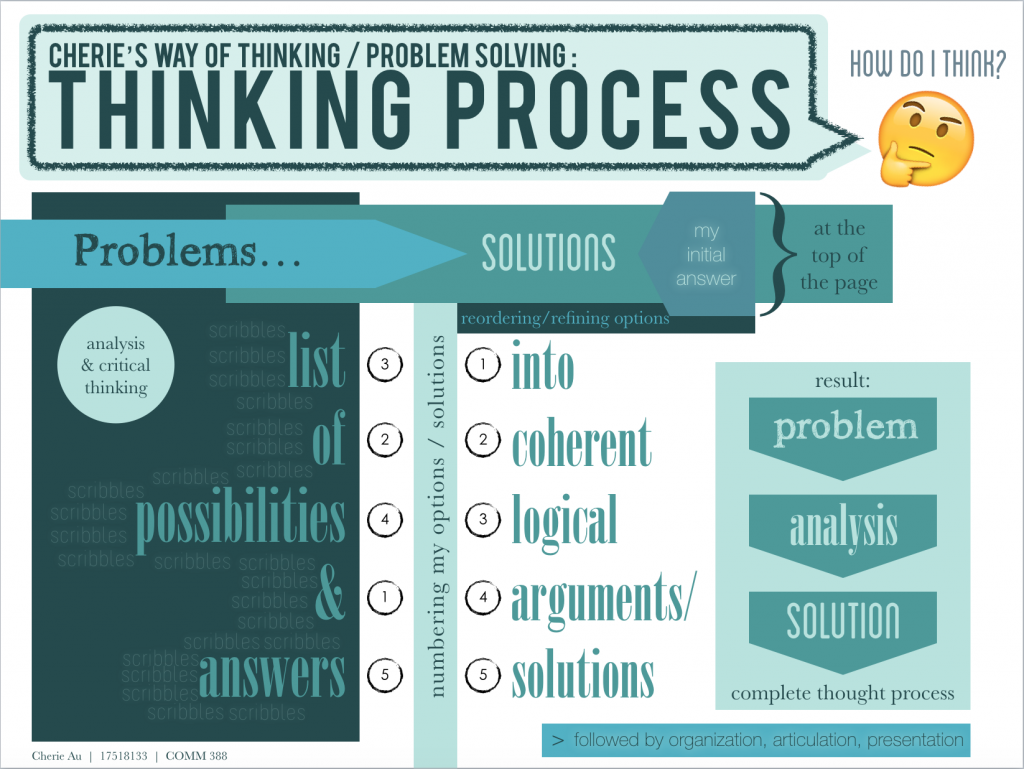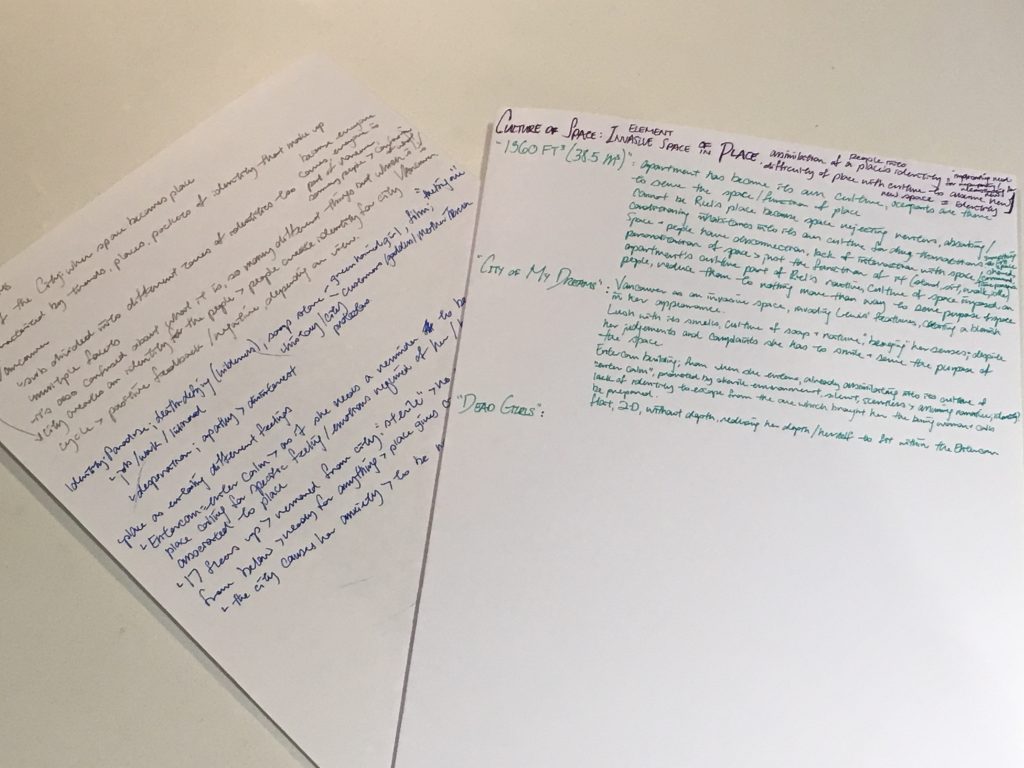The “funnel” essay model––where big concepts are “funnelled” and become a single idea (thesis), which is then supported by several arguments, and is then followed by a conclusion that widens the scope once again. I think the funnel captures my way of thinking and information processing rather accurately. Whether it’s assignments or everyday problems, the model has become so ingrained into my thinking by English teachers throughout the years––thank you very much––that I naturally think through the steps of the funnel without realizing it. The idea of thoughts going from “big > small > big” mirrors the “general > specific > general” thinking that our minds go through everyday. Even in the realm of business, I think everything, whether it be products or services, is “concepts > details > concepts” turned into reality.
If I need to explain my thinking in terms of divergent/convergent thinking, I think my initial answer is selected from a quick diverging of possible options. This then converges into one single point to then diverge again to explore the array of solutions within that one point before converging again into a concrete answer… I’ve come to realize through this assignment that the way our brain processes information happens so instantaneously that explaining it step by step is a rather grandiose task. Nevertheless, I will attempt to explain the way my brain handles problems, how it makes its selection among the possible solutions, and how it decides to present that information.
My thinking takes shape in the form of writing, if scribbles count as actual writing? My mind map isn’t so much a map rather than just blocks and points of sentences and thought segments that continue itself down the page. I guess you could say I organize myself with words rather than with pictures or by visuals (English major, go figure). Despite this, the way I present my thoughts could end up being very visual, as with the infographic I created in an attempt to explain the way my brain processes information (I hope it helps). As much as thinking and analyzing is involved to create a single idea, the effectiveness of transmitting the message is key if I want people to actually understand what I am thinking. No matter how efficient or how brilliant my ideas are, if I can’t translate that into comprehensible data, then all is for nought. Because of this, I consider being able to think through how to create an easy to understand and effective presentation is just as important as the whole thinking process.
Of course, showing is always more effective than telling, and luckily I have some outlines of previous papers lying around my desk. Exhibit A: Photo evidence shows an example of an outline to a research essay I had to write for an English course. The left page is my initial scribbling and brain blabbing on the possible arguments and theses, while the right is a more organized, well defined and explained version of the scribbles. Those are both incomplete as I suspect there was a third piece to the puzzle, but alas it is lost among the chaos of term papers and finals. Notice the use of colours too––I get bored easily and using colourful pens makes it easier to cope while making my thoughts easier to organize as well.
I look forward to the Business Innovations course as a way to further refine my way of thinking and problem solving, as well as finding effective and creative ways to present information to the world outside my consciousness. I am always for simple, beautiful and effective types of engagement, and if I am able to learn about design processes during my time in this course, I will for sure take advantage of this chance to further improve my skills.
As a wise woman (a.k.a my mother) once said: “We never focus on the effects of the problem, always on how to solve the problem. Because what is the point of getting emotional when you can do something about it?” And I truly believe this has affected my way of thinking way more than any other methods I was taught, because part of the fun of constantly thinking through problems is the smile on people’s faces once you’ve solved them, rather than being upset over how much the problem is well… a problem.

